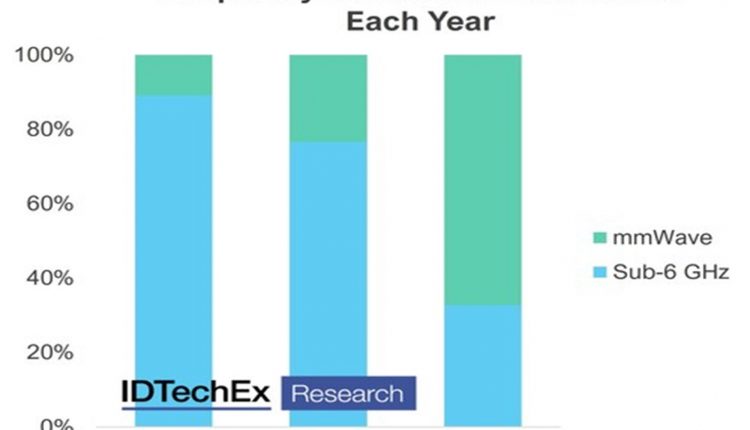Today, much of the 5G infrastructure is repurposed 4G equipment at lower frequency bands. Transition to 5G is based on the adoption of higher frequencies which have primarily been categorized into sub-6 GHz and mmWave (> 20 GHz) bands. The challenge, however, is thermal management. 5G transitions to higher frequencies require antenna design, technology, and material choices to transition. IDTechEx’s recent report on “Thermal Management for 5G” addresses 5G deployment and how this impacts the antenna design, selection of semiconductor technology, die attach materials, and thermal interface materials.
Although sub-6 GHz 5G may not provide the speeds and applications often publicized for 5G, it plays a crucial role in achieving coverage over large areas. Above 4 GHz, laterally-diffused metal-oxide-semiconductor power amplifiers struggle with efficiency. This is where wide bandgap semiconductors like GaN (gallium nitride) come in. GaN will likely take a greater market share in 5G, and with GaN comes a transition in the die attach technology, representing up to a four-fold increase in yearly demand over the next ten years for 5G infrastructure. AuSn is the typical die attach material for GaN today. However, sintered pastes may replace it, as its improved thermal performance is addressed in the latest report from IDTechEx, “Thermal Management for 5G 2022-2032“.
There is also a challenge with mmWave high-frequency technology based on signal propagation; as the frequency increases, so does the attenuation of the signal, leading to a reduced range that is easily blocked by walls, windows, and even severe weather conditions. However, mmWave small cells will require greater deployment numbers to provide sufficient coverage. Due to their deployment scenarios, they are unlikely to use active cooling methods; combining this with the densification of beamforming components will present greater requirements for solutions like thermal interface materials.
Finally, massive MIMO enables infrastructure to serve more terminals in the same frequency band. This increases the number of RF chains per installation, beamforming capabilities, and the number of antenna elements used in networks resulting in an increase in the materials required for the antenna PCB, power amplifiers, beamforming components, and many more.

